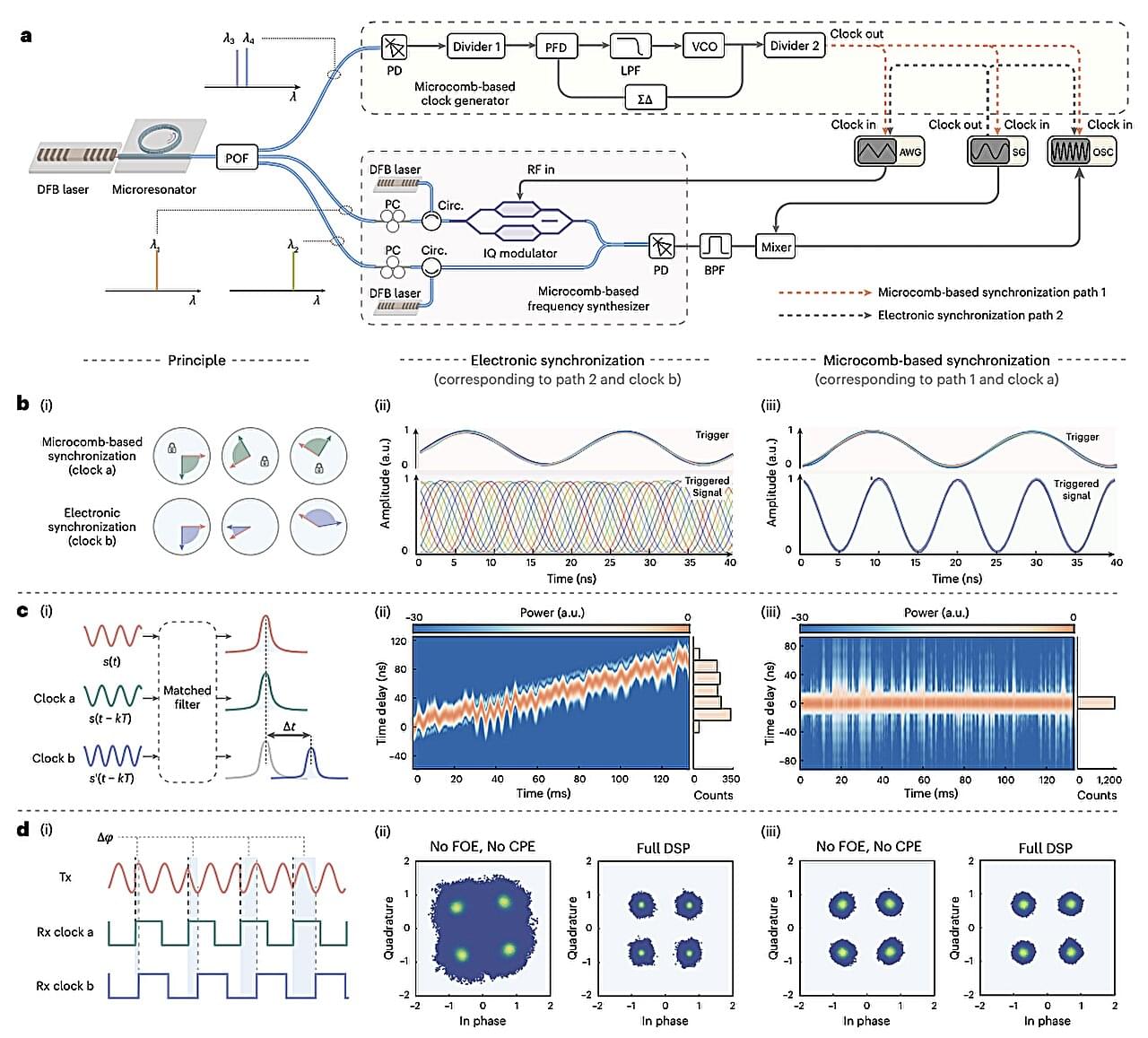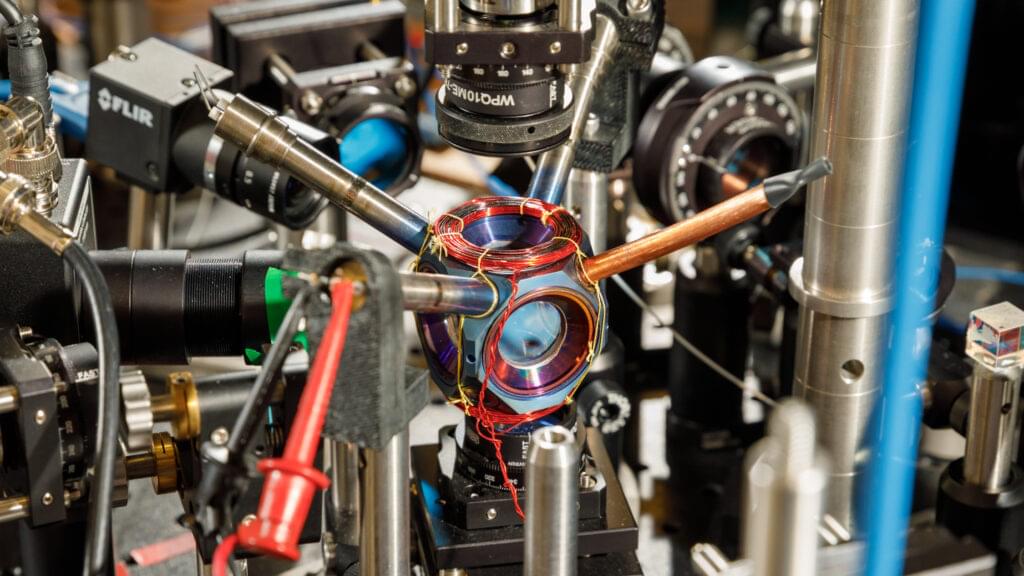Japanese scientists have created diamond quantum sensors that can monitor EV batteries with great precision to help improve efficiency.


Ask almost any physicist what the most frustrating problem is in modern-day physics, and they will likely say the discrepancy between general relativity and quantum mechanics. That discrepancy has been a thorn in the side of the physics community for decades.
While there has been some progress on potential theories that could rectify the two, there has been scant experimental evidence to support those theories. That is where Selim Shahriar from Northwestern University, Evanston, comes in. He plans to work on a concept called the Space-borne Ultra-Precise Measurement of the Equivalent Principle Signature of Quantum Gravity (SUPREME-GQ), which he hopes will help collect some accurate experimental data on the subject once and for all.
To put it bluntly, the experiment is complicated. At its heart, it uses a space-based platform carrying a quantum-entangled sensor and some precise positioning systems. But understanding why it is useful to test quantum gravity first requires some explanation. Let’s first look at one of the most famous tenets of General Relativity—the Equivalence Principle.
From green screen to Unreal Engine, Industrial Light & Magic’s Dean Yurke revealed his secrets to master camera tracking in an in-depth video.

Optoelectronics are promising devices that combine optical components, which operate leveraging light, with electronics, which leverage electrical current. Optoelectronic systems could transmit data faster than conventional electronics, thus opening new possibilities for the development of high-speed communication technology.
Despite their potential, the deployment of optoelectronics has so far been limited, in part due to reported difficulties in synchronizing optically generated signals with those of traditional electronic clocks. These signals are difficult to synchronize as optical and electronic components typically operate at different frequencies.
The frequencies of optical signals (i.e., generally hundreds of gigahertz) are generally significantly higher than those of electronic circuits, which range from megahertz to a few gigahertz. This mismatch in frequencies makes aligning the frequencies of the two types of components challenging, which in turn adversely impacts the reliability and efficiency of optoelectronics.


A collaboration of researchers in Austria and China has built a universal inverse-design magnonic device that can efficiently produce new electronic components based solely on a definition of the desired performance, and do the job in minutes or hours. They published the result in Nature Electronics.
Designing an electronic component usually requires extensive manual design and simulation to achieve a desired functionality. Inverse design eliminates these steps. It is a two-step process: First, the developers divide a design area into an array of smaller, programmable elements. Then, they deploy iterative feedback-loop optimization to tune these elements to achieve a predefined functionality.
This new device manipulates magnons, the quasiparticle quanta of magnetic spin waves. There have been magnonic devices and inverse-design devices, but this is the first universal magnonic inverse design device. Hypothetically, this kind of device can duplicate the performance of anything from a diode to a neuromorphic circuit.

When a droplet of water falls on a hot pan, it dances across the surface, skimming on a thin layer of steam like a tiny hovercraft; this is known as the Leidenfrost effect. But now, researchers know what happens when a hot droplet falls on a cool surface.
These new findings, published in the journal Newton, demonstrate that hot and burning droplets can bounce off cool surfaces, propelled by a thin layer of air that forms beneath them. This phenomenon could inspire new strategies for slowing the spread of fires and improving engine efficiency.
“We started with a very fundamental question: What will happen when a burning droplet impacts a solid surface?” says senior author Pingan Zhu of City University of Hong Kong, China.

For years, scientists were baffled by a peculiar problem: why do platinum electrodes, usually stable, corrode so quickly in electrochemical devices? A collaboration between SLAC National Accelerator Laboratory and Leiden University cracked the case by using cutting-edge X-ray techniques.
They found that platinum hydrides, not sodium ions as once suspected, were responsible for the degradation. This discovery could revolutionize hydrogen production and electrochemical sensor durability, potentially slashing costs and improving efficiency.
Unraveling a Costly Mystery.

Georg Ferdinand Ludwig Philipp Cantor (/ ˈ k æ n t ɔːr / KAN-tor; German: ; 3 March [O.S. 19 February] 1845 – 6 January 1918 [ 1 ] ) was a mathematician who played a pivotal role in the creation of set theory, which has become a fundamental theory in mathematics. Cantor established the importance of one-to-one correspondence between the members of two sets, defined infinite and well-ordered sets, and proved that the real numbers are more numerous than the natural numbers. Cantor’s method of proof of this theorem implies the existence of an infinity of infinities. He defined the cardinal and ordinal numbers and their arithmetic. Cantor’s work is of great philosophical interest, a fact he was well aware of. [ 2 ]
Originally, Cantor’s theory of transfinite numbers was regarded as counter-intuitive – even shocking. This caused it to encounter resistance from mathematical contemporaries such as Leopold Kronecker and Henri Poincaré [ 3 ] and later from Hermann Weyl and L. E. J. Brouwer, while Ludwig Wittgenstein raised philosophical objections; see Controversy over Cantor’s theory. Cantor, a devout Lutheran Christian, [ 4 ] believed the theory had been communicated to him by God. [ 5 ] Some Christian theologians (particularly neo-Scholastics) saw Cantor’s work as a challenge to the uniqueness of the absolute infinity in the nature of God [ 6 ] – on one occasion equating the theory of transfinite numbers with pantheism [ 7 ] – a proposition that Cantor vigorously rejected.
